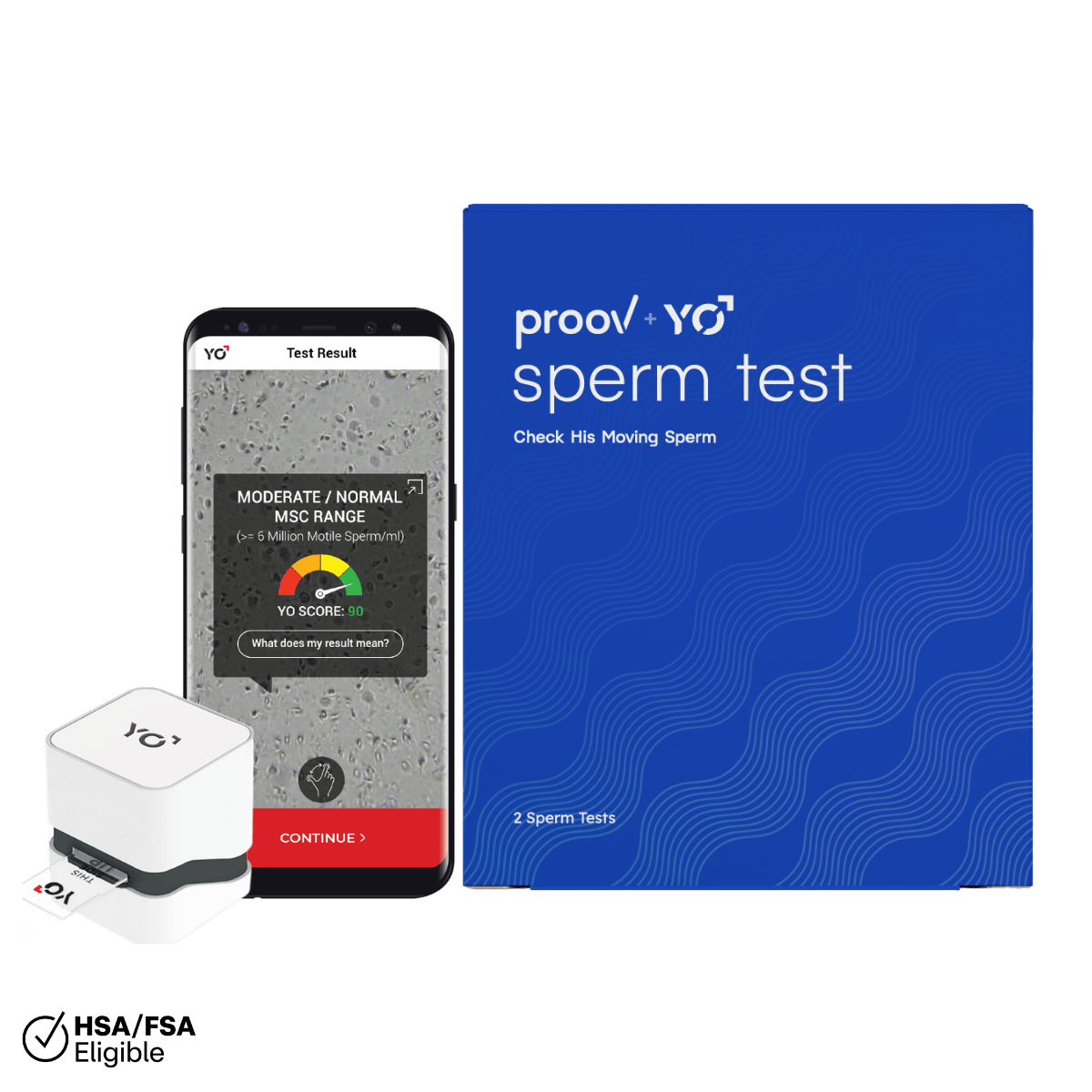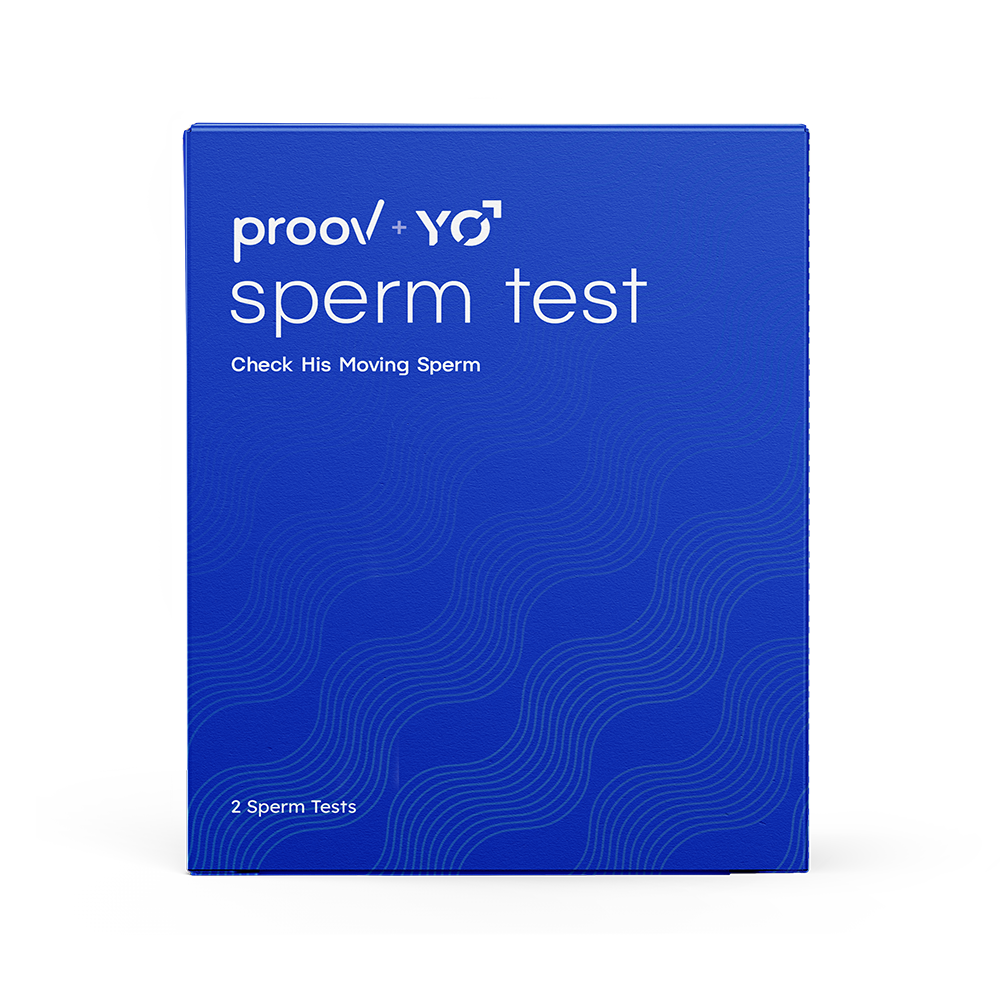Written by: Dr. Amy Beckley, PhD, Founder and Inventor of the Proov test — the first and only FDA-cleared test to confirm successful ovulation at home.
Written on: 10/25/21
Our hormones regulate our cycle and can make or break our chances at pregnancy. While many women focus mostly on their luteinizing hormone (LH) levels — yep, we’re looking at you, ovulation tests — our other hormones matter, too!
Take follicle stimulating hormone (FSH), for example. FSH is a little tricky since we actually want a low FSH level during our cycle, in comparison to LH, estrogen, and progesterone, which all should be elevated at their respective time to shine during your cycle. We know — it can get confusing!
So, let’s break it down. Keep reading to learn more about a normal FSH level to get pregnant.
What is FSH and why is it important?
Your brain releases FSH (follicle stimulating hormone) at the beginning of each cycle to stimulate your ovaries to grow follicles and eggs in preparation for ovulation.
Women are born with all the eggs they will ever have. Our ovarian reserve consists of 1 to 2 million eggs at birth. From these, around 400,000 eggs will reach puberty and only 400 will eventually mature and ovulate throughout our reproductive years.
From the time we reach puberty and start cycling, we roughly ovulate one mature follicle per cycle (unless we’re pregnant, breastfeeding, or on birth control). We say roughly since every once in a while we may experience an anovulatory cycle, meaning a cycle in which no egg is released.
Each cycle starts with a clean slate and all hormone levels are low, or at their baseline. Once this happens, our brain understands it’s time to prepare for ovulation again and releases a small amount of FSH to begin stimulating the ovaries to grow follicles.
Under the influence of FSH, the ovary selects the best follicle and gives it the FSH so it can mature. As the follicle grows and matures, it needs less FSH and produces more estrogen until eventually it becomes FSH-independent.
At this point, FSH levels drop and the egg prepares for ovulation. Without FSH, the follicles cannot grow or prepare for ovulation each cycle.
What do high FSH levels mean?
When a woman has a high ovarian reserve and her ovaries are functioning correctly, the ovary only needs a small amount of FSH to start stimulating follicular growth.
However, as we age and our ovarian reserve decreases, there are less and less follicles left for recruitment. This means the ovary has a harder time recruiting a dominant follicle.
When this happens, the brain senses the ovary struggling and sends more FSH to help. With more FSH, the ovary has more fuel to produce eggs, even though it has a small amount of follicles left.
Higher levels of FSH at the beginning of the cycle may be a sign of diminished ovarian reserve (DOR). Our fertility declines as we age and we usually see signs of DOR — such as elevated FSH levels — starting at about 35 years old, which is totally normal.
Sometimes, diminished ovarian reserve occurs in women much younger than 35, which we consider premature ovarian insufficiency (POI). Regardless of your age, elevated FSH levels may indicate a lower ovarian reserve, which can make it more difficult to conceive.
We should note that high FSH doesn’t happen overnight. Our ovaries age gradually over time and tracking FSH levels over many cycles (even several years) can help you spot these trends.

Our ovaries age gradually over time and tracking FSH levels over many cycles (even several years) can help you spot these trends.
What is a normal FSH level to get pregnant?
Like many things, the sheer volume of recommendations about FSH levels makes it difficult to tell which level you should strive for. Often, it seems every reproductive clinic has their own ideas on the “normal” level.
While the ideal FSH level depends on your age and life stage, the standard for women trying to conceive naturally is about 10 mIU/ml. Anything higher than 10 may start indicating diminished ovarian reserve.
But we’ve heard misconceptions about how elevated FSH impacts your overall fertility. FSH simply serves as a marker of your ovarian reproductive capacity — you can have high FSH and still release a totally healthy egg in a natural cycle. Elevated FSH just means your ovaries may have a harder time producing said egg.
In fact, studies show that in women aged 30 to 44 years old who have been trying to conceive for 3-6 months, biomarkers like low AMH (anti-mullerian hormone) and FSH were not associated with low fertility. Women in their 40s can absolutely get pregnant naturally.
So why do many resources link elevated FSH levels to a lower chance at natural conception? Because as we age, our eggs age too meaning their quality also diminishes over time. Lower quality eggs make a successful natural conception less likely — albeit still totally possible!
Additionally, DOR can come with other fertility issues like luteal phase defect, hormonal imbalance, or irregular cycles which can all make it more difficult to successfully conceive. But rules are meant to be broken, and it’s completely possible to get pregnant naturally with high FSH.
However, this guidance changes for medicated cycles, i.e. cycles in which you’re undergoing assisted reproductive technology (ART) like in-vitro fertilization (IVF). In fact, elevated FSH levels may indicate a lower response to fertility treatments.
In an IVF cycle, you want to stimulate your ovaries to produce as many eggs as possible for retrieval, to increase your chances of creating a healthy embryo. Since elevated FSH signals a low ovarian reserve, this can make it more difficult to get a sufficient number of eggs.
How can I measure my FSH levels?
Regardless of if you’re trying to conceive naturally or with ART, testing your FSH levels can give you a better idea of where you stand. You can measure FSH via a blood test from your doctor or at home via a urine-based hormone test strip.
FSH levels have historically been measured in blood on or around cycle day 3. FSH levels, like other hormones, can fluctuate cycle by cycle, and even day by day, so a single FSH blood reading may not provide the full picture.
A non-invasive, urine-based test — like Proov Reserve FSH tests — offers an easier, less-expensive way to test your FSH levels over time from the comfort of your home. We recommend testing FSH levels on cycle days 5, 7, and 9 to see how your levels change over time.

Proov Reserve FSH tests offer an easier, less-expensive way to test your FSH levels over time from the comfort of your home.
With the app Proov Insight app you can take your FSH test results one step further with numeric hormone values, info on what your results mean, and personalized action plans. Even better, you can test your FSH levels for multiple cycles to see if your levels change over time.
While we can pinpoint a “normal” FSH level as the most ideal for conception, FSH only comprises a small piece of the pregnancy puzzle and, alone, likely won’t make or break your chances at conception.













